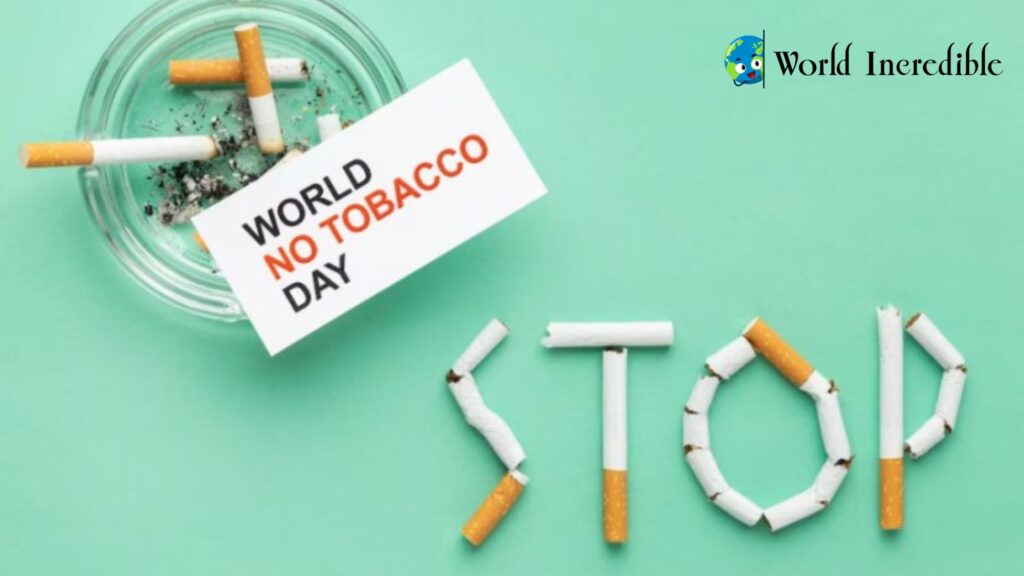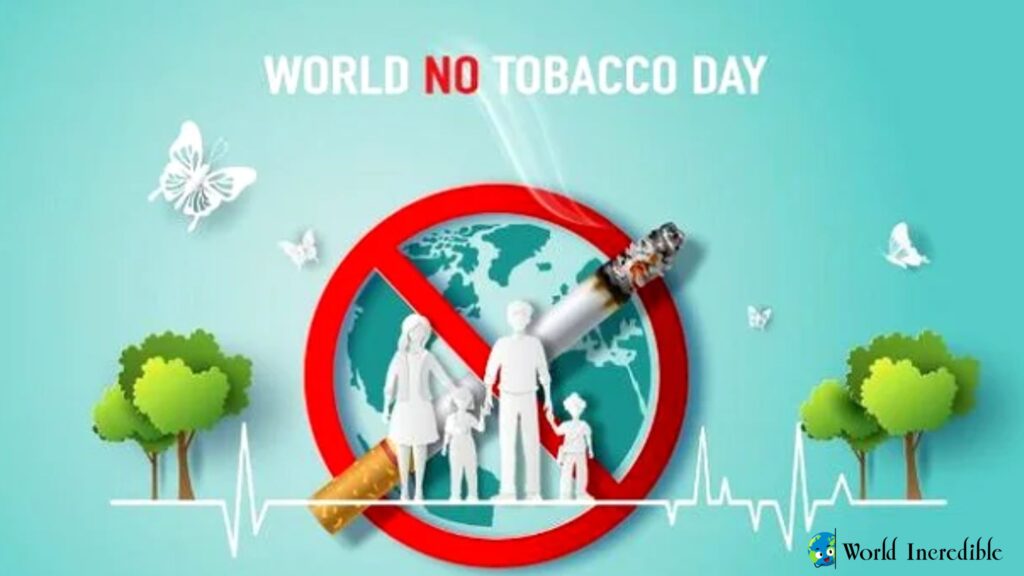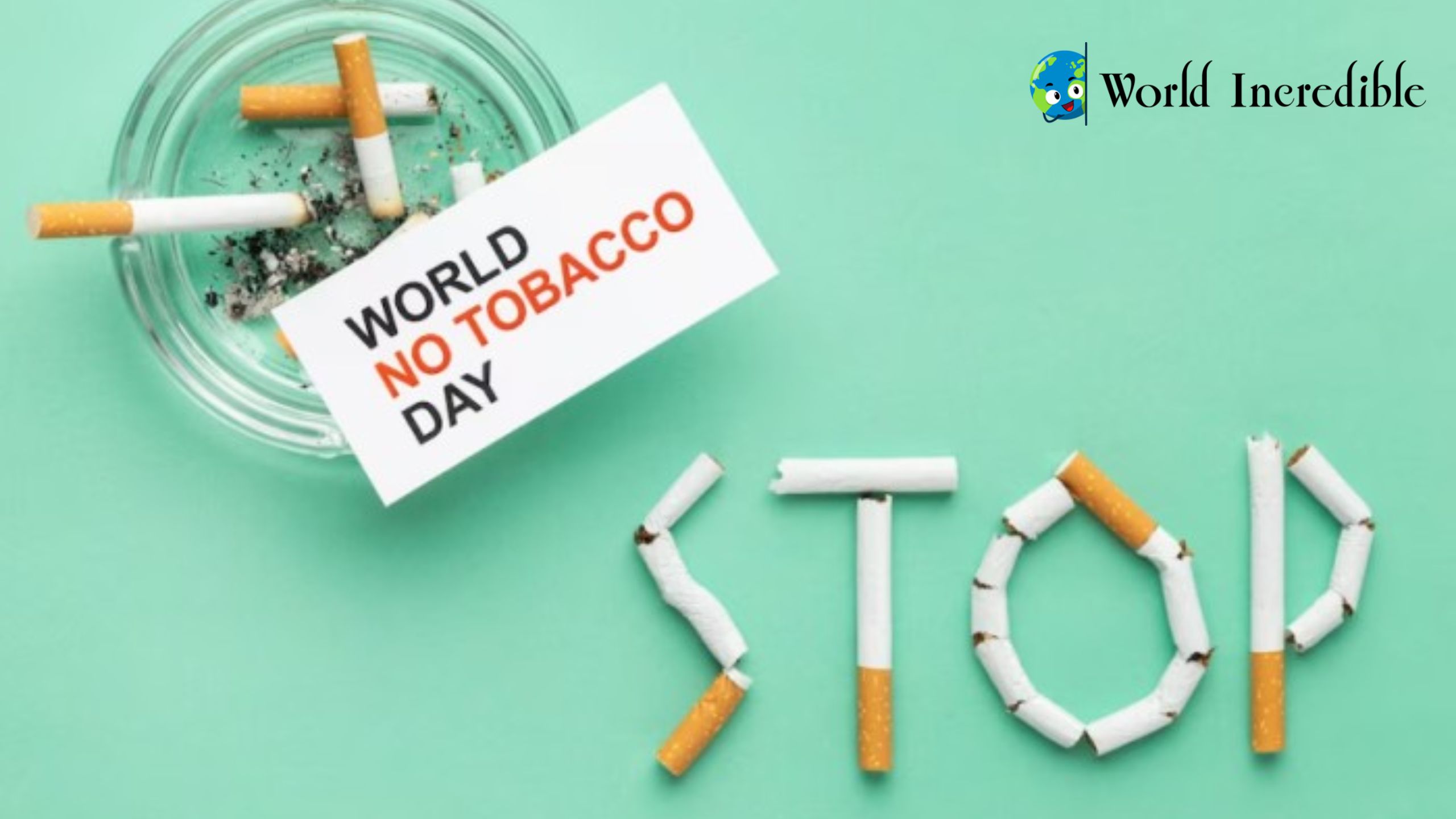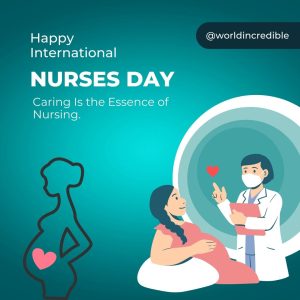Every year on May 31st, the world comes together to observe World No Tobacco Day. This annual event, spearheaded by the World Health Organization (WHO), aims to raise awareness about the devastating health effects of tobacco use and to advocate for effective policies to reduce tobacco consumption globally. The theme for each year varies, addressing different aspects of tobacco control and its impact on public health.

The Origins and Purpose of World No Tobacco Day
World No Tobacco Day was established by the WHO in 1987 to draw global attention to the tobacco epidemic and the preventable death and disease it causes. The primary goals of this day are to:
Highlight the health risks associated with tobacco use: Tobacco use is a leading cause of numerous diseases, including cancer, heart disease, stroke, and chronic respiratory diseases.
Advocate for effective tobacco control policies: These include measures such as higher taxes on tobacco products, comprehensive bans on tobacco advertising, promotion and sponsorship, and the creation of smoke-free environments.
Support individuals in their efforts to quit tobacco: Providing resources and support for those who want to stop using tobacco is crucial in reducing overall consumption.
The Global Impact of Tobacco
Tobacco use remains one of the biggest public health threats the world has ever faced, killing more than 8 million people annually. Over 7 million of these deaths are the result of direct tobacco use, while around 1.2 million are non-smokers exposed to second-hand smoke. The economic costs of tobacco use are equally staggering, with billions of dollars spent on healthcare and lost productivity every year.
Themes and Campaigns: A Focus on Solutions
Each year, World No Tobacco Day focuses on a specific theme related to tobacco control. Recent themes have included:
2023: “We Need Food, Not Tobacco“: This campaign highlighted the importance of reducing tobacco farming and shifting towards sustainable and nutritious crops.
2022: “Protect the Environment”: Emphasizing the environmental damage caused by tobacco cultivation, production, distribution, and waste.
2021: “Commit to Quit”: Encouraging smokers worldwide to pledge to quit smoking and providing resources to help them succeed.
These themes are designed to address different facets of the tobacco epidemic and to inspire coordinated action across sectors.
The Role of Policies in Tobacco Control
Effective tobacco control policies are critical in reducing tobacco use and its associated harms. Key measures recommended by the WHO Framework Convention on Tobacco Control (WHO FCTC) include:
Raising taxes on tobacco products: Higher prices discourage smoking and generate revenue for public health programs.
Implementing comprehensive bans on tobacco advertising: Limiting exposure to tobacco promotion helps reduce smoking rates, especially among young people.
Creating smoke-free environments: Banning smoking in public places protects non-smokers from second-hand smoke and helps smokers reduce their consumption.
Providing support for smoking cessation: Access to counseling, medications, and other resources can significantly improve the chances of quitting.
Success Stories and Ongoing Challenges
Many countries have made significant strides in reducing tobacco use through robust policies and public health campaigns. For instance, countries like Australia, the UK, and Uruguay have implemented plain packaging laws, strict advertising bans, and high tobacco taxes, leading to substantial declines in smoking rates.
However, challenges remain. The tobacco industry continues to employ aggressive marketing tactics, especially targeting low- and middle-income countries where tobacco control policies may be weaker. Additionally, the rise of new products like e-cigarettes presents new regulatory challenges.
How You Can Get Involved
World No Tobacco Day is not just for policymakers and health professionals—everyone can play a part in the fight against tobacco. Here are some ways you can get involved:
Educate yourself and others: Learn about the risks of tobacco use and share this knowledge with your community.
Support tobacco control measures: Advocate for stronger tobacco control policies in your area.
Help someone quit: Offer support and resources to friends or family members who are trying to quit smoking.
Promote smoke-free environments: Encourage smoke-free policies in public places and support businesses that implement them.
World No Tobacco Day serves as a crucial reminder of the ongoing battle against the global tobacco epidemic. We can make significant strides toward a healthier, tobacco-free world by raising awareness, advocating for effective policies, and supporting individuals in their efforts to quit. Let this day inspire you to take action—whether it’s educating others, supporting policy changes, or helping someone quit, every effort counts in the fight against tobacco.
Why World No Tobacco Day Is Necessary?
Every year on May 31, the world comes together to observe World No Tobacco Day, an initiative led by the World Health Organization (WHO). This day serves as a critical reminder of the dangers of tobacco use and the need for effective policies to reduce its consumption. Despite decades of efforts, tobacco remains one of the leading causes of preventable death and disease globally. Here are several compelling reasons why World No Tobacco Day is necessary and must continue to be observed.

1. Raising Awareness of Health Risks
Tobacco use is a major risk factor for many chronic diseases, including cancer, lung disease, and cardiovascular conditions. According to the WHO, tobacco kills more than 8 million people each year, with over 7 million of those deaths resulting from direct tobacco use and around 1.2 million from second-hand smoke exposure. World No Tobacco Day helps to highlight these staggering statistics and educates the public about the health risks associated with tobacco. By raising awareness, it encourages individuals to make healthier choices and motivates policymakers to implement stricter tobacco control measures.
2. Promoting Global Health Initiatives
The observance of World No Tobacco Day provides an opportunity to promote global health initiatives aimed at reducing tobacco consumption. This includes the Framework Convention on Tobacco Control (FCTC), an international treaty that seeks to protect present and future generations from the devastating health, social, environmental, and economic consequences of tobacco consumption and exposure to tobacco smoke. The day serves as a platform to advocate for the implementation of effective policies, such as taxation, advertising bans, and smoking cessation programs.
3. Highlighting Economic Costs
Tobacco use not only affects health but also imposes a significant economic burden. The costs associated with healthcare for treating tobacco-related diseases, lost productivity due to illness, and premature death are substantial. The WHO estimates that the global economic costs of smoking amount to over US$1 trillion annually. World No Tobacco Day underscores these economic impacts, urging governments and organizations to invest in tobacco control and prevention strategies that can save money and lives.
4. Protecting the Environment
The environmental impact of tobacco is often overlooked, yet it is significant. Tobacco farming contributes to deforestation, soil degradation, and water pollution. Additionally, the manufacturing process produces waste and chemical runoff, while cigarette butts, one of the most common forms of litter, are non-biodegradable and toxic to wildlife. World No Tobacco Day shines a light on these environmental issues, advocating for sustainable practices and responsible disposal of tobacco products.
5. Supporting Tobacco Users in Quitting
One of the key objectives of World No Tobacco Day is to support individuals who want to quit smoking. The day promotes access to resources, such as counseling, nicotine replacement therapies, and quitlines, which can significantly increase the chances of successful cessation. By providing support and encouragement, World No Tobacco Day helps reduce the number of smokers and, consequently, the prevalence of tobacco-related diseases.
6. Empowering Youth
Preventing tobacco use among youth is crucial, as most smokers begin during adolescence. Tobacco companies often target young people with marketing strategies designed to make smoking appear glamorous and desirable. World No Tobacco Day counters these efforts by educating youth about the dangers of tobacco use and promoting tobacco-free lifestyles. It empowers young people to make informed decisions and resist the pressures of starting to smoke.
Conclusion
World No Tobacco Day is a vital observance that brings attention to the ongoing battle against tobacco use. It serves as a reminder of the severe health risks, economic costs, and environmental damage caused by tobacco. By raising awareness, promoting global health initiatives, supporting cessation efforts, and empowering youth, World No Tobacco Day plays a crucial role in the global fight against tobacco. Continued observance and action are essential to achieving a healthier, tobacco-free future for all.
FAQ
Q: What is World No Tobacco Day?
A: World No Tobacco Day is an annual event observed on May 31st to raise awareness about the harmful effects of tobacco use and to advocate for effective policies to reduce tobacco consumption. It was established by the World Health Organization (WHO) in 1987.
Q: Why is World No Tobacco Day important?
A: World No Tobacco Day is important because it highlights the health risks associated with tobacco use and promotes initiatives to reduce tobacco consumption. This day serves as a reminder of the global tobacco epidemic and the preventable death and disease it causes, encouraging people to quit and avoid tobacco.
Q: What are some common themes of World No Tobacco Day?
A: Each year, World No Tobacco Day focuses on a specific theme to address different aspects of tobacco use and its impact. Common themes include the harmful effects of tobacco on lung health, the negative impact on cardiovascular health, the dangers of tobacco advertising and sponsorship, and the need to protect youth from tobacco addiction.
Q: How can individuals participate in World No Tobacco Day?
A: Individuals can participate in World No Tobacco Day by spreading awareness about the dangers of tobacco use, supporting tobacco control policies, encouraging friends and family to quit smoking, and participating in local events or campaigns aimed at reducing tobacco consumption.
Q: What are some effective ways to quit smoking?
A: Effective ways to quit smoking include seeking support from healthcare professionals, using nicotine replacement therapies (such as patches or gum), joining support groups or counseling programs, setting a quit date and sticking to it, and avoiding triggers that may cause cravings. It’s also helpful to stay physically active and maintain a healthy diet to manage withdrawal symptoms.












